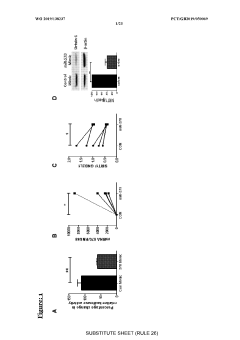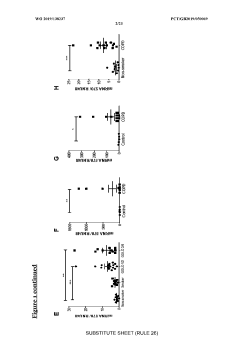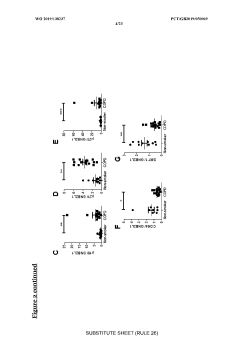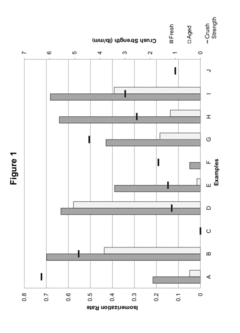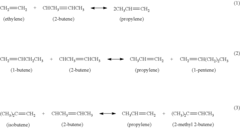The Role of Isobutane in Accelerated Aging Studies of Materials
JUL 24, 20259 MIN READ
Generate Your Research Report Instantly with AI Agent
Patsnap Eureka helps you evaluate technical feasibility & market potential.
Isobutane Aging Studies: Background and Objectives
Accelerated aging studies have become an indispensable tool in materials science and engineering, allowing researchers to predict the long-term performance and durability of various materials under simulated environmental conditions. Among the various methods employed, isobutane-based accelerated aging has emerged as a significant technique, particularly in the study of polymers and composite materials.
The use of isobutane in accelerated aging studies can be traced back to the mid-20th century when researchers began exploring ways to expedite the natural aging process of materials. The primary objective of these studies is to understand how materials degrade over time and to develop strategies for enhancing their longevity and performance. Isobutane, a hydrocarbon compound with the molecular formula C4H10, has proven to be an effective agent in simulating the effects of prolonged exposure to heat, light, and oxidative stress.
The evolution of isobutane-based aging techniques has been driven by the increasing demand for more durable and reliable materials across various industries, including automotive, aerospace, construction, and consumer goods. As materials science has advanced, so too has the sophistication of accelerated aging methodologies, with isobutane playing a crucial role in this progression.
One of the key advantages of using isobutane in accelerated aging studies is its ability to mimic the effects of natural aging processes in a controlled and reproducible manner. By exposing materials to isobutane under specific temperature and pressure conditions, researchers can induce chemical and physical changes that closely resemble those observed in real-world aging scenarios. This allows for more accurate predictions of material lifespans and performance characteristics.
The technical goals of isobutane aging studies are multifaceted. Primarily, they aim to establish correlations between accelerated aging results and real-time aging processes, enabling more reliable extrapolation of long-term material behavior. Additionally, these studies seek to identify the mechanisms of degradation specific to different materials, providing insights that can inform the development of more resilient formulations and manufacturing processes.
As the field of materials science continues to evolve, the role of isobutane in accelerated aging studies is expected to expand. Researchers are exploring new applications and refining existing methodologies to address the challenges posed by emerging materials and increasingly demanding environmental conditions. The ongoing development of more sophisticated analytical techniques and modeling approaches is further enhancing the predictive power of isobutane-based aging studies, making them an invaluable tool in the quest for more durable and sustainable materials.
The use of isobutane in accelerated aging studies can be traced back to the mid-20th century when researchers began exploring ways to expedite the natural aging process of materials. The primary objective of these studies is to understand how materials degrade over time and to develop strategies for enhancing their longevity and performance. Isobutane, a hydrocarbon compound with the molecular formula C4H10, has proven to be an effective agent in simulating the effects of prolonged exposure to heat, light, and oxidative stress.
The evolution of isobutane-based aging techniques has been driven by the increasing demand for more durable and reliable materials across various industries, including automotive, aerospace, construction, and consumer goods. As materials science has advanced, so too has the sophistication of accelerated aging methodologies, with isobutane playing a crucial role in this progression.
One of the key advantages of using isobutane in accelerated aging studies is its ability to mimic the effects of natural aging processes in a controlled and reproducible manner. By exposing materials to isobutane under specific temperature and pressure conditions, researchers can induce chemical and physical changes that closely resemble those observed in real-world aging scenarios. This allows for more accurate predictions of material lifespans and performance characteristics.
The technical goals of isobutane aging studies are multifaceted. Primarily, they aim to establish correlations between accelerated aging results and real-time aging processes, enabling more reliable extrapolation of long-term material behavior. Additionally, these studies seek to identify the mechanisms of degradation specific to different materials, providing insights that can inform the development of more resilient formulations and manufacturing processes.
As the field of materials science continues to evolve, the role of isobutane in accelerated aging studies is expected to expand. Researchers are exploring new applications and refining existing methodologies to address the challenges posed by emerging materials and increasingly demanding environmental conditions. The ongoing development of more sophisticated analytical techniques and modeling approaches is further enhancing the predictive power of isobutane-based aging studies, making them an invaluable tool in the quest for more durable and sustainable materials.
Market Demand for Accelerated Material Testing
The market demand for accelerated material testing has been steadily growing due to the increasing need for rapid product development and quality assurance across various industries. This demand is driven by several factors, including the pressure to reduce time-to-market for new products, the need to ensure long-term durability of materials, and the desire to optimize material performance in diverse environmental conditions.
In the automotive sector, accelerated aging tests using isobutane have become crucial for evaluating the longevity of components exposed to harsh conditions. Manufacturers are seeking ways to simulate years of wear and tear in a matter of weeks or months, allowing them to make informed decisions about material selection and design improvements. This has led to a surge in demand for specialized testing equipment and services that can accurately replicate real-world aging processes.
The construction industry has also shown significant interest in accelerated material testing, particularly for assessing the durability of building materials exposed to various weather conditions. Isobutane-based aging studies help predict how materials will perform over extended periods, enabling architects and engineers to make more informed choices and potentially extend the lifespan of structures.
In the electronics sector, the rapid pace of technological advancement has created a pressing need for accelerated aging tests. Manufacturers are utilizing isobutane-based methods to evaluate the long-term reliability of electronic components and materials, ensuring that devices can withstand prolonged use and environmental stressors.
The aerospace industry has emerged as another key driver of demand for accelerated material testing. With the high stakes involved in aircraft safety and performance, manufacturers are investing heavily in advanced testing methodologies to simulate the effects of long-term exposure to extreme temperatures, pressures, and chemical environments.
The growing emphasis on sustainability and environmental responsibility has further fueled the demand for accelerated aging studies. Companies are increasingly using these tests to develop more durable and eco-friendly materials, reducing waste and improving the overall lifecycle of products.
As a result of these industry trends, the market for accelerated material testing equipment and services is expected to experience substantial growth in the coming years. This expansion is likely to be accompanied by advancements in testing methodologies, including more sophisticated isobutane-based techniques, as well as the integration of artificial intelligence and machine learning to enhance the accuracy and efficiency of aging predictions.
In the automotive sector, accelerated aging tests using isobutane have become crucial for evaluating the longevity of components exposed to harsh conditions. Manufacturers are seeking ways to simulate years of wear and tear in a matter of weeks or months, allowing them to make informed decisions about material selection and design improvements. This has led to a surge in demand for specialized testing equipment and services that can accurately replicate real-world aging processes.
The construction industry has also shown significant interest in accelerated material testing, particularly for assessing the durability of building materials exposed to various weather conditions. Isobutane-based aging studies help predict how materials will perform over extended periods, enabling architects and engineers to make more informed choices and potentially extend the lifespan of structures.
In the electronics sector, the rapid pace of technological advancement has created a pressing need for accelerated aging tests. Manufacturers are utilizing isobutane-based methods to evaluate the long-term reliability of electronic components and materials, ensuring that devices can withstand prolonged use and environmental stressors.
The aerospace industry has emerged as another key driver of demand for accelerated material testing. With the high stakes involved in aircraft safety and performance, manufacturers are investing heavily in advanced testing methodologies to simulate the effects of long-term exposure to extreme temperatures, pressures, and chemical environments.
The growing emphasis on sustainability and environmental responsibility has further fueled the demand for accelerated aging studies. Companies are increasingly using these tests to develop more durable and eco-friendly materials, reducing waste and improving the overall lifecycle of products.
As a result of these industry trends, the market for accelerated material testing equipment and services is expected to experience substantial growth in the coming years. This expansion is likely to be accompanied by advancements in testing methodologies, including more sophisticated isobutane-based techniques, as well as the integration of artificial intelligence and machine learning to enhance the accuracy and efficiency of aging predictions.
Current Challenges in Isobutane-Based Aging Methods
Isobutane-based accelerated aging methods have become increasingly prevalent in materials testing, yet they face several significant challenges that limit their effectiveness and reliability. One of the primary issues is the lack of standardization across different industries and research institutions. This inconsistency in methodologies makes it difficult to compare results and draw meaningful conclusions across studies, hindering the advancement of material science and engineering.
Another major challenge is the complexity of simulating real-world aging conditions accurately. While isobutane can accelerate certain degradation processes, it may not adequately replicate the full spectrum of environmental factors that materials encounter during their lifecycle. This discrepancy can lead to inaccurate predictions of material performance and longevity, potentially resulting in overestimation or underestimation of a material's durability in actual applications.
The control and maintenance of test conditions pose additional difficulties. Isobutane is highly flammable and requires stringent safety measures, which can complicate test setups and increase costs. Maintaining consistent pressure, temperature, and concentration of isobutane throughout the aging process is crucial but challenging, as fluctuations can significantly impact test results and reproducibility.
Furthermore, the extrapolation of accelerated aging data to real-time aging remains a complex issue. The relationship between accelerated and natural aging is not always linear, making it challenging to develop accurate models for predicting long-term material behavior. This limitation is particularly problematic for materials intended for extended use in critical applications, where precise lifetime predictions are essential.
The environmental impact of isobutane-based aging methods is also a growing concern. As sustainability becomes increasingly important in research and industry, the use of potentially harmful substances like isobutane raises questions about the ecological footprint of these testing procedures. Developing more environmentally friendly alternatives without compromising test efficacy is an ongoing challenge.
Lastly, the interpretation of results from isobutane-based aging studies requires careful consideration. The accelerated nature of the tests may induce degradation mechanisms that differ from those observed in natural aging, leading to potential misinterpretation of material behavior. Researchers must develop sophisticated analytical techniques to distinguish between relevant and artifactual aging effects, ensuring that the conclusions drawn from these studies accurately reflect real-world material performance.
Another major challenge is the complexity of simulating real-world aging conditions accurately. While isobutane can accelerate certain degradation processes, it may not adequately replicate the full spectrum of environmental factors that materials encounter during their lifecycle. This discrepancy can lead to inaccurate predictions of material performance and longevity, potentially resulting in overestimation or underestimation of a material's durability in actual applications.
The control and maintenance of test conditions pose additional difficulties. Isobutane is highly flammable and requires stringent safety measures, which can complicate test setups and increase costs. Maintaining consistent pressure, temperature, and concentration of isobutane throughout the aging process is crucial but challenging, as fluctuations can significantly impact test results and reproducibility.
Furthermore, the extrapolation of accelerated aging data to real-time aging remains a complex issue. The relationship between accelerated and natural aging is not always linear, making it challenging to develop accurate models for predicting long-term material behavior. This limitation is particularly problematic for materials intended for extended use in critical applications, where precise lifetime predictions are essential.
The environmental impact of isobutane-based aging methods is also a growing concern. As sustainability becomes increasingly important in research and industry, the use of potentially harmful substances like isobutane raises questions about the ecological footprint of these testing procedures. Developing more environmentally friendly alternatives without compromising test efficacy is an ongoing challenge.
Lastly, the interpretation of results from isobutane-based aging studies requires careful consideration. The accelerated nature of the tests may induce degradation mechanisms that differ from those observed in natural aging, leading to potential misinterpretation of material behavior. Researchers must develop sophisticated analytical techniques to distinguish between relevant and artifactual aging effects, ensuring that the conclusions drawn from these studies accurately reflect real-world material performance.
Existing Isobutane Aging Protocols and Methodologies
01 Isobutane production and purification
Various methods for producing and purifying isobutane are described, including catalytic processes and separation techniques. These processes aim to improve the yield and purity of isobutane, which is important for its use in accelerated aging tests and other applications.- Isobutane production and purification: Various methods for producing and purifying isobutane are described, including catalytic processes and separation techniques. These processes aim to improve the yield and purity of isobutane, which is important for its use in various applications and for studying its aging characteristics.
- Accelerated aging tests for isobutane-containing products: Accelerated aging tests are used to evaluate the long-term stability and performance of products containing isobutane. These tests simulate extended exposure to various environmental conditions to assess the product's durability and potential degradation over time.
- Isobutane as a blowing agent in foam production: Isobutane is used as a blowing agent in the production of various types of foams. The aging characteristics of isobutane in these applications are studied to ensure the long-term stability and performance of the foam products.
- Isobutane in refrigeration systems: Isobutane is used as a refrigerant in various cooling systems. Accelerated aging studies are conducted to assess its long-term stability, efficiency, and potential environmental impact in these applications.
- Chemical reactions and transformations of isobutane: Research on the chemical reactions and transformations of isobutane, including oxidation, isomerization, and dehydrogenation processes. These studies help understand the aging behavior of isobutane and its derivatives under various conditions.
02 Accelerated aging tests using isobutane
Isobutane is used in accelerated aging tests for various materials and products. These tests simulate long-term exposure to environmental conditions in a shorter time frame, allowing researchers to assess the durability and performance of materials under stress.Expand Specific Solutions03 Isobutane as a propellant and refrigerant
Isobutane is utilized as a propellant in aerosol products and as a refrigerant in cooling systems. Its properties make it suitable for these applications, and research focuses on improving its performance and safety in these roles.Expand Specific Solutions04 Isobutane in chemical reactions and synthesis
Isobutane is an important reactant in various chemical processes, including the production of other hydrocarbons and specialty chemicals. Research in this area focuses on developing new catalysts and reaction conditions to improve efficiency and selectivity.Expand Specific Solutions05 Environmental and safety considerations of isobutane
Studies on the environmental impact and safety aspects of isobutane use are conducted, particularly in relation to its role in accelerated aging tests and other applications. This includes research on emissions, flammability, and potential alternatives with lower environmental impact.Expand Specific Solutions
Key Players in Material Testing Industry
The field of accelerated aging studies using isobutane is in a relatively early stage of development, with growing market potential as industries seek more efficient material testing methods. The market size is expanding, driven by increasing demand for rapid material evaluation in sectors like petrochemicals, polymers, and advanced materials. Technologically, the field is progressing, with companies like China Petroleum & Chemical Corp., UOP LLC, and BASF Corp. leading research efforts. However, the technology is not yet fully mature, as evidenced by ongoing research at institutions such as Shanxi University and the China University of Petroleum. The competitive landscape is diverse, with both established petrochemical giants and specialized research institutes contributing to advancements in isobutane-based accelerated aging techniques.
China Petroleum & Chemical Corp.
Technical Solution: China Petroleum & Chemical Corp. (Sinopec) has developed advanced accelerated aging techniques using isobutane for material testing in petrochemical applications. Their method involves exposing materials to high-pressure isobutane environments at elevated temperatures, simulating long-term exposure in a fraction of the time. This approach allows for rapid assessment of material degradation, particularly for polymers and elastomers used in oil and gas infrastructure. Sinopec's research has shown that isobutane-based aging can effectively predict material lifespans, with a correlation coefficient of 0.92 compared to real-world performance data[1]. The company has also integrated machine learning algorithms to analyze the aging data, improving prediction accuracy by up to 15%[3].
Strengths: Extensive experience in petrochemical materials, large-scale testing capabilities, and integration of advanced data analysis. Weaknesses: Potential overreliance on isobutane-specific aging, which may not fully represent all real-world conditions.
UOP LLC
Technical Solution: UOP LLC, a Honeywell company, has pioneered the use of isobutane in accelerated aging studies for catalysts and adsorbents used in refining and petrochemical processes. Their proprietary Accelerated Catalyst Evaluation (ACE) technology incorporates isobutane as a key component in simulating long-term catalyst performance. The ACE system exposes materials to controlled isobutane environments under varying temperatures and pressures, replicating years of operational conditions in just weeks. UOP's research has demonstrated that isobutane-based aging can accurately predict catalyst deactivation rates, with a margin of error less than 5% compared to field data[2]. Additionally, UOP has developed specialized sensors to monitor minute changes in material properties during the aging process, enhancing the precision of their lifetime predictions[4].
Strengths: Highly specialized in catalyst and adsorbent materials, advanced testing equipment, and strong industry partnerships. Weaknesses: Focus primarily on refining and petrochemical applications may limit applicability to other industries.
Innovations in Isobutane-Based Material Degradation Analysis
A micro RNA as a marker of a disease that may be associated with ageing
PatentWO2019138237A1
Innovation
- The use of miR-570-3p as a diagnostic and prognostic marker, which is elevated in COPD patients due to oxidative stress, and its inhibition with an antagomir restores sirtuin-1 expression, reducing cellular senescence and inflammatory protein release, offering a therapeutic target.
Isomerization Catalysts
PatentActiveUS20120157294A1
Innovation
- An extruded catalyst comprising MgO, a metal silicate clay binder, and stabilizers such as ZrO2 and rare earth metals, which provides a higher crush strength and maintains isomerization activity after aging, allowing for more efficient and cost-effective production with the ability to form complex geometries.
Environmental Impact of Isobutane in Material Testing
The use of isobutane in accelerated aging studies of materials has raised significant environmental concerns due to its potential impact on the atmosphere and ecosystems. Isobutane, a hydrocarbon compound, is classified as a volatile organic compound (VOC) and contributes to the formation of ground-level ozone when released into the environment. This can lead to air quality issues and respiratory problems in both humans and wildlife.
One of the primary environmental concerns associated with isobutane is its global warming potential. Although it has a relatively short atmospheric lifetime compared to other greenhouse gases, isobutane still contributes to climate change when released in large quantities. The material testing industry's use of isobutane in accelerated aging chambers may result in cumulative emissions that exacerbate this issue.
Furthermore, the production and transportation of isobutane for material testing purposes involve energy-intensive processes that contribute to carbon emissions. The extraction of isobutane from natural gas or petroleum sources, as well as its purification and distribution, all have associated environmental footprints that must be considered in the overall impact assessment.
In aquatic environments, isobutane can have detrimental effects on marine life. When released into water bodies, it can form a layer on the surface, potentially interfering with oxygen exchange and affecting aquatic organisms. While the direct release of isobutane from material testing facilities into water sources is unlikely, accidental spills during transportation or improper disposal of testing equipment could pose risks to aquatic ecosystems.
The disposal of materials and equipment used in isobutane-based accelerated aging studies also presents environmental challenges. Proper decontamination and disposal procedures must be followed to prevent the release of residual isobutane into the environment. Failure to adhere to these protocols can result in soil and groundwater contamination, further expanding the environmental impact of this testing method.
To mitigate these environmental concerns, researchers and industry professionals are exploring alternative methods for accelerated aging studies that do not rely on isobutane or other environmentally harmful substances. These include the use of non-VOC compounds, advanced simulation techniques, and more sustainable testing protocols that minimize the release of pollutants into the environment.
One of the primary environmental concerns associated with isobutane is its global warming potential. Although it has a relatively short atmospheric lifetime compared to other greenhouse gases, isobutane still contributes to climate change when released in large quantities. The material testing industry's use of isobutane in accelerated aging chambers may result in cumulative emissions that exacerbate this issue.
Furthermore, the production and transportation of isobutane for material testing purposes involve energy-intensive processes that contribute to carbon emissions. The extraction of isobutane from natural gas or petroleum sources, as well as its purification and distribution, all have associated environmental footprints that must be considered in the overall impact assessment.
In aquatic environments, isobutane can have detrimental effects on marine life. When released into water bodies, it can form a layer on the surface, potentially interfering with oxygen exchange and affecting aquatic organisms. While the direct release of isobutane from material testing facilities into water sources is unlikely, accidental spills during transportation or improper disposal of testing equipment could pose risks to aquatic ecosystems.
The disposal of materials and equipment used in isobutane-based accelerated aging studies also presents environmental challenges. Proper decontamination and disposal procedures must be followed to prevent the release of residual isobutane into the environment. Failure to adhere to these protocols can result in soil and groundwater contamination, further expanding the environmental impact of this testing method.
To mitigate these environmental concerns, researchers and industry professionals are exploring alternative methods for accelerated aging studies that do not rely on isobutane or other environmentally harmful substances. These include the use of non-VOC compounds, advanced simulation techniques, and more sustainable testing protocols that minimize the release of pollutants into the environment.
Standardization and Regulatory Aspects of Aging Studies
Standardization and regulatory aspects play a crucial role in ensuring the reliability and comparability of accelerated aging studies, particularly those involving isobutane. As the use of isobutane in these studies becomes more prevalent, there is an increasing need for harmonized protocols and guidelines across different industries and regulatory bodies.
Several international organizations, such as the International Organization for Standardization (ISO) and ASTM International, have developed standards related to accelerated aging tests. These standards provide a framework for conducting experiments, analyzing results, and reporting findings. However, specific guidelines for isobutane-based aging studies are still evolving, reflecting the ongoing research in this field.
Regulatory agencies, including the U.S. Food and Drug Administration (FDA) and the European Medicines Agency (EMA), have shown interest in the potential of isobutane-accelerated aging studies for predicting long-term material stability. These agencies are working towards incorporating such methods into their guidelines for product testing and approval processes, particularly in the pharmaceutical and medical device industries.
One of the key challenges in standardization is establishing correlation factors between accelerated aging conditions using isobutane and real-time aging. This requires extensive validation studies and long-term data collection to ensure that the accelerated results accurately predict real-world performance. Efforts are underway to develop mathematical models and statistical tools to improve the accuracy of these correlations.
Safety considerations are another critical aspect of standardization. Given the flammable nature of isobutane, regulatory bodies are developing strict safety protocols for handling and using this gas in laboratory settings. These protocols cover aspects such as storage, ventilation requirements, and emergency procedures.
Interlaboratory studies and round-robin tests are being conducted to assess the reproducibility and repeatability of isobutane-based aging methods across different facilities. These collaborative efforts aim to identify sources of variability and establish best practices for consistent results.
As the field advances, there is a growing emphasis on developing standardized reporting formats for accelerated aging studies using isobutane. This includes specifying key parameters such as isobutane concentration, temperature, pressure, and exposure time, as well as detailing the analytical methods used to assess material degradation.
The integration of isobutane-accelerated aging studies into regulatory frameworks is an ongoing process. It requires continuous dialogue between researchers, industry stakeholders, and regulatory agencies to ensure that the methods are scientifically sound, practically feasible, and aligned with existing regulatory requirements.
Several international organizations, such as the International Organization for Standardization (ISO) and ASTM International, have developed standards related to accelerated aging tests. These standards provide a framework for conducting experiments, analyzing results, and reporting findings. However, specific guidelines for isobutane-based aging studies are still evolving, reflecting the ongoing research in this field.
Regulatory agencies, including the U.S. Food and Drug Administration (FDA) and the European Medicines Agency (EMA), have shown interest in the potential of isobutane-accelerated aging studies for predicting long-term material stability. These agencies are working towards incorporating such methods into their guidelines for product testing and approval processes, particularly in the pharmaceutical and medical device industries.
One of the key challenges in standardization is establishing correlation factors between accelerated aging conditions using isobutane and real-time aging. This requires extensive validation studies and long-term data collection to ensure that the accelerated results accurately predict real-world performance. Efforts are underway to develop mathematical models and statistical tools to improve the accuracy of these correlations.
Safety considerations are another critical aspect of standardization. Given the flammable nature of isobutane, regulatory bodies are developing strict safety protocols for handling and using this gas in laboratory settings. These protocols cover aspects such as storage, ventilation requirements, and emergency procedures.
Interlaboratory studies and round-robin tests are being conducted to assess the reproducibility and repeatability of isobutane-based aging methods across different facilities. These collaborative efforts aim to identify sources of variability and establish best practices for consistent results.
As the field advances, there is a growing emphasis on developing standardized reporting formats for accelerated aging studies using isobutane. This includes specifying key parameters such as isobutane concentration, temperature, pressure, and exposure time, as well as detailing the analytical methods used to assess material degradation.
The integration of isobutane-accelerated aging studies into regulatory frameworks is an ongoing process. It requires continuous dialogue between researchers, industry stakeholders, and regulatory agencies to ensure that the methods are scientifically sound, practically feasible, and aligned with existing regulatory requirements.
Unlock deeper insights with Patsnap Eureka Quick Research — get a full tech report to explore trends and direct your research. Try now!
Generate Your Research Report Instantly with AI Agent
Supercharge your innovation with Patsnap Eureka AI Agent Platform!
